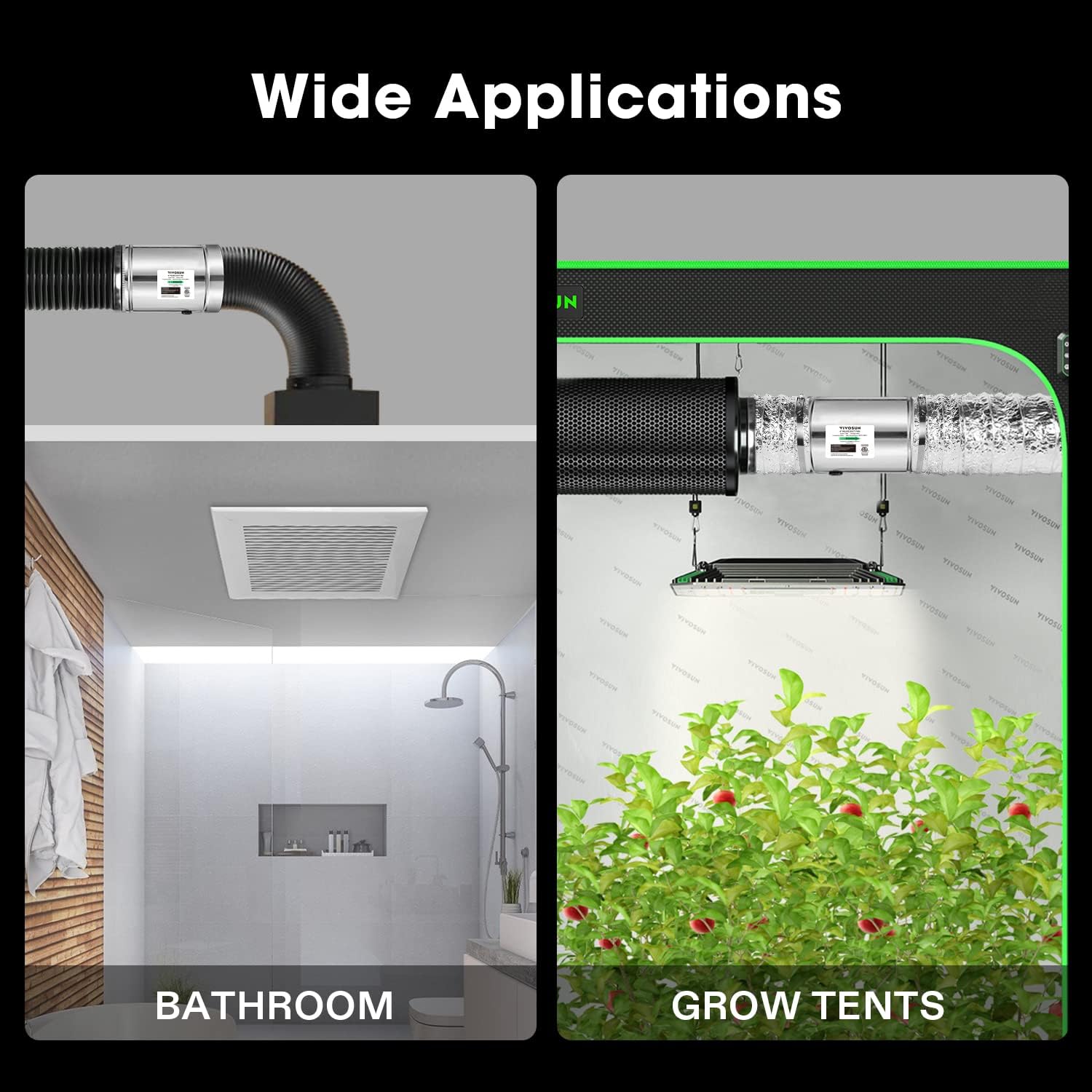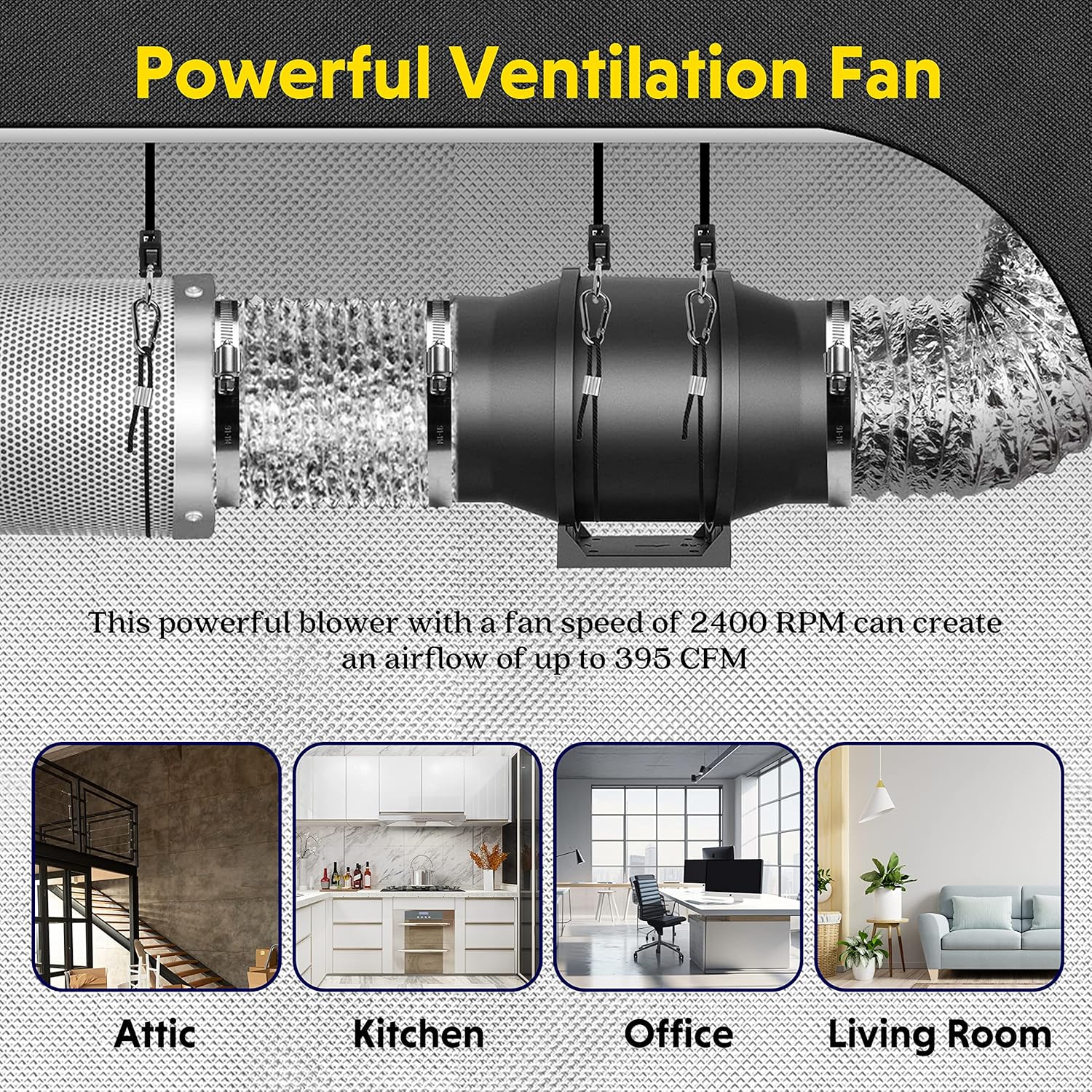The Unseen Hero of Air Quality: Understanding the Inline Duct Fan
An essential component in modern ventilation systems, the inline duct fan plays a crucial role in maintaining healthy and comfortable indoor environments. If you've ever wondered how large spaces or specific rooms maintain fresh air without drafty windows or noisy standalone units, chances are an inline duct fan is working diligently behind the scenes. These versatile devices are designed to be installed directly within ductwork, offering a powerful yet discreet solution for air movement. Whether for residential, commercial, or industrial applications, understanding the benefits and types of these fans can significantly improve your air quality management strategy. Let's explore why an inline duct fan might be the perfect addition to your setup.
Maximizing Airflow with High CFM Inline Fan Technology
One of the primary advantages of an inline duct fan is its ability to move a significant volume of air, often measured in Cubic Feet per Minute (CFM). A high CFM inline fan is engineered for efficiency, utilizing aerodynamic designs and powerful motors to ensure optimal airflow even through long or complex duct runs. For instance, products like the TD Silent Mixed Flow Inline Fan leverage mixed-flow impeller technology. This advanced design combines the characteristics of axial and centrifugal fans, resulting in high airflow rates and pressures with reduced turbulence. This means stale air, pollutants, or excess humidity can be effectively removed, and fresh, conditioned air can be distributed evenly, making it an ideal duct fan for HVAC system enhancement. The robust construction ensures they can handle demanding environments, providing consistent performance where it's needed most.
The Sound of Silence: Investing in a Quiet Inline Duct Fan
Noise is a common concern in ventilation, especially in environments like homes, offices, or studios where peace and quiet are paramount. This is where a quiet inline duct fan truly shines. Manufacturers have invested heavily in developing fans that operate with minimal sound output. Features contributing to this include specially designed motor casings, aerodynamically shaped blades that cut through the air smoothly, and quality materials that dampen vibrations. A quiet inline duct fan ensures that you get all the benefits of powerful ventilation without the distracting hum or roar associated with less sophisticated models. This makes them perfect for bedrooms, living areas, recording studios, or any space where acoustic comfort is a priority, transforming your environment into a tranquil oasis of fresh air.
Versatile Applications: From Inline Exhaust Fan to Full Ventilation
Inline duct fans are incredibly versatile. They can function as an inline exhaust fan, efficiently removing moisture, odors, and pollutants_from specific areas like bathrooms, kitchens, workshops, or grow rooms. In larger systems, they act as an inline ventilation fan, boosting the airflow from a central HVAC unit to ensure all parts of a building receive adequate heating, cooling, or fresh air. For targeted air movement, an inline blower fan can be employed to direct air precisely where it's needed, such as for cooling equipment or providing focused ventilation. This adaptability makes them a cornerstone of effective air management across various sectors.
Installation and Maintenance: User-Friendly Designs
Modern inline duct fans are designed with both the professional installer and the DIY enthusiast in mind. Many models feature compact designs and robust mounting brackets, like those made from stainless steel, for easy and secure installation within existing or new ductwork. Features such as dual-clamp systems allow for quick access to the motor and impeller for cleaning or maintenance, minimizing downtime. An electrical inline duct fan often comes with clearly labeled wiring (e.g., black for main line, blue for fast, brown for slow, yellow-green for ground) and integral control boxes, simplifying the connection process and ensuring safety. This focus on user-friendliness ensures that setting up and maintaining your ventilation system is a straightforward task.
Choosing the Right Fan: Residential to Commercial Inline Duct Fans
Selecting the appropriate inline duct fan depends on several factors, including the size of the space, the length and complexity of the ductwork, the required airflow (CFM), and noise considerations. For smaller residential applications, a compact, quiet model might suffice. However, for larger commercial inline duct fans or industrial setups, more powerful units with higher CFM ratings and durable construction designed for continuous operation are necessary. Ningbo Aoshun Electrical Co., Ltd. offers a comprehensive range, from sophisticated mixed flow inline fans to robust industrial units, ensuring a one-stop purchasing experience for all electrical ventilation needs. Their expertise in sourcing and designing innovative electrical products allows them to cater to wholesalers, buyers, and retail customers alike, providing solutions for every ventilation challenge. Considering the specific needs of your environment will ensure you choose a fan that delivers optimal performance and long-term reliability.




